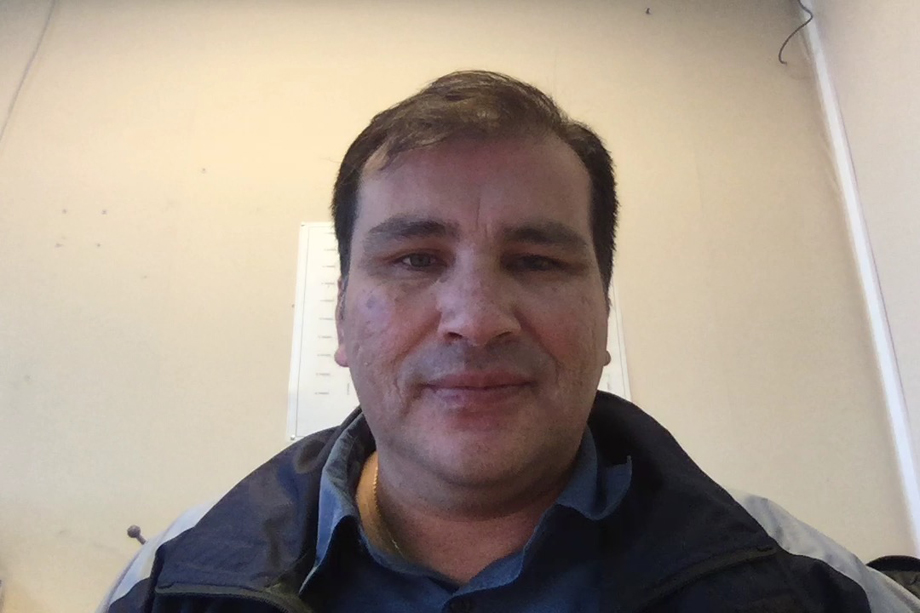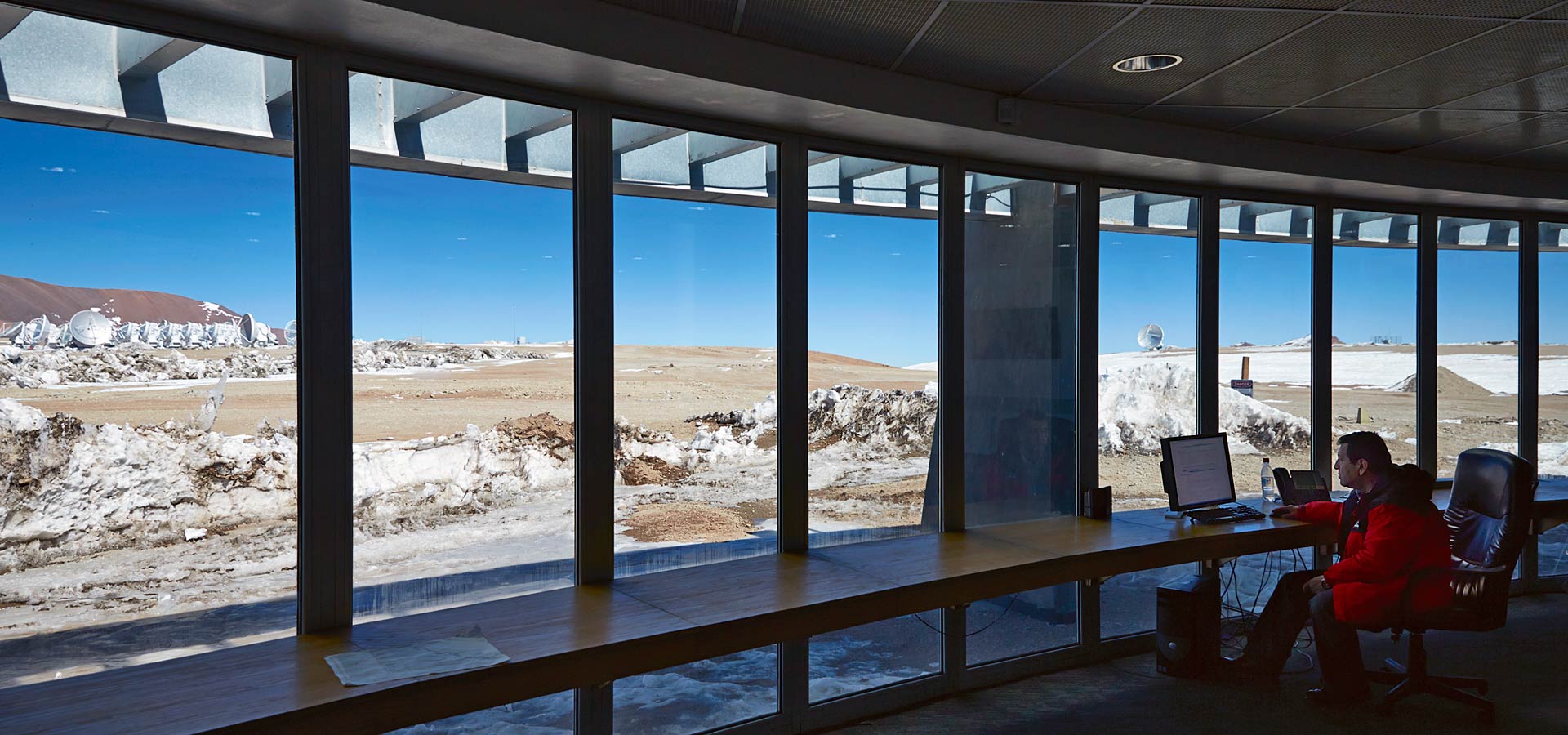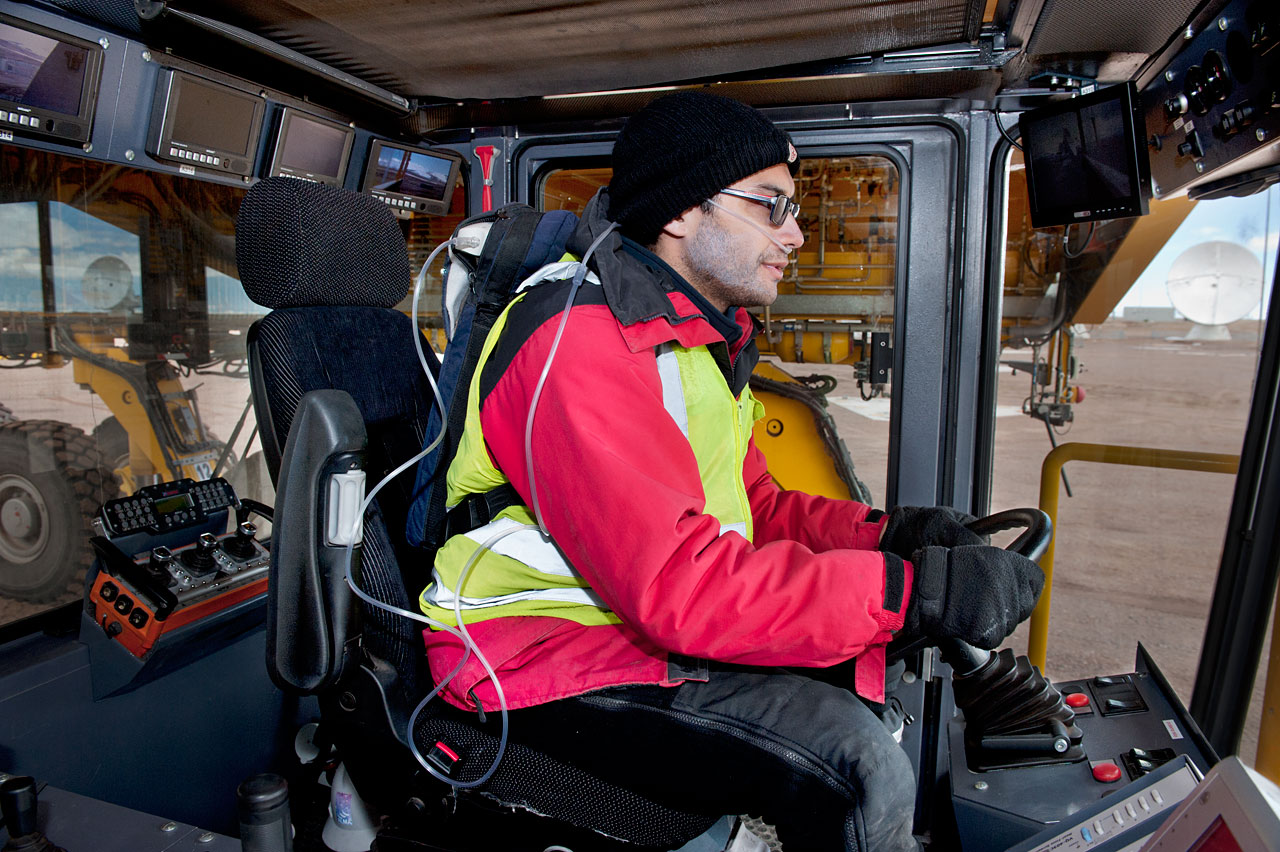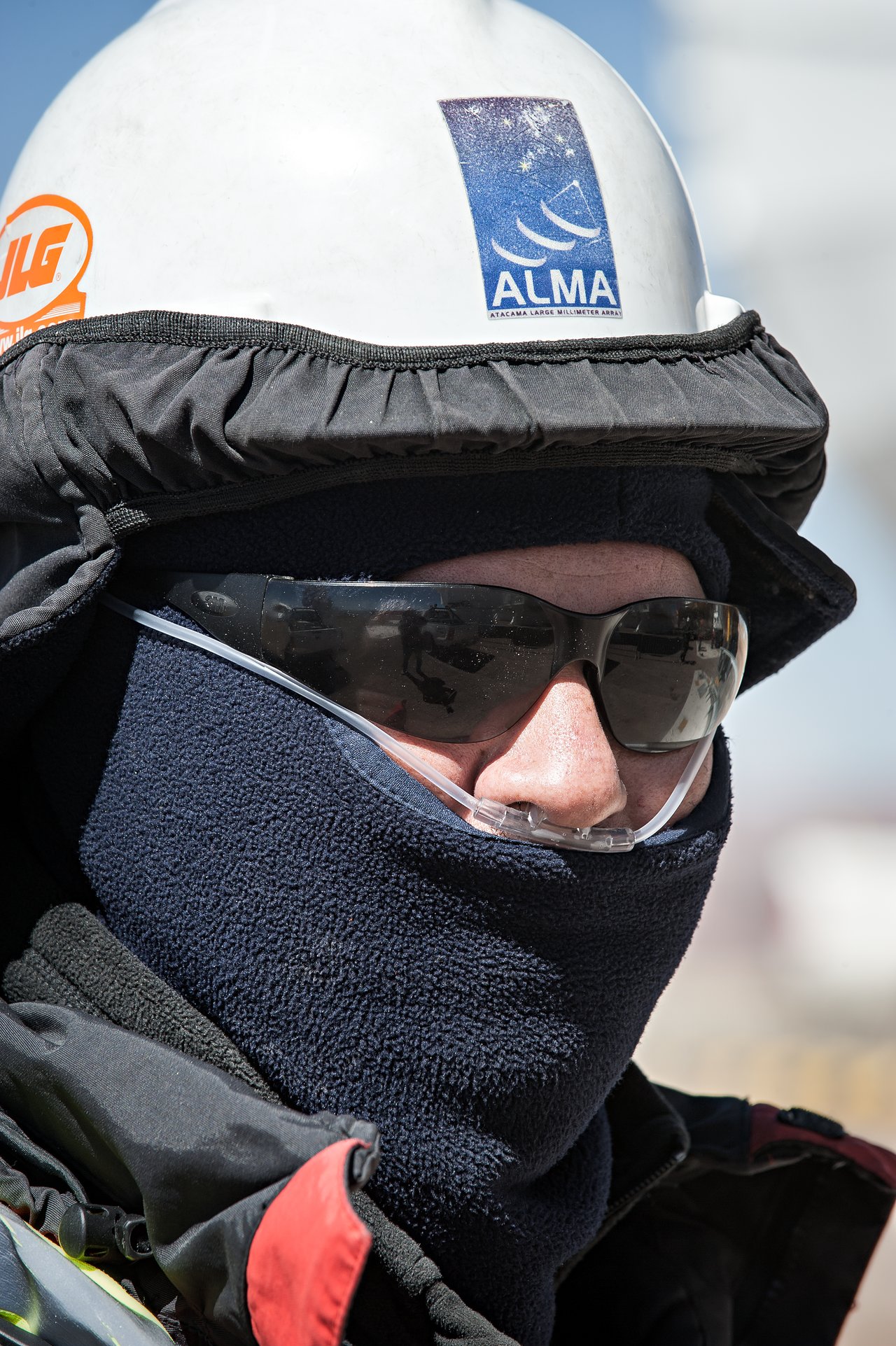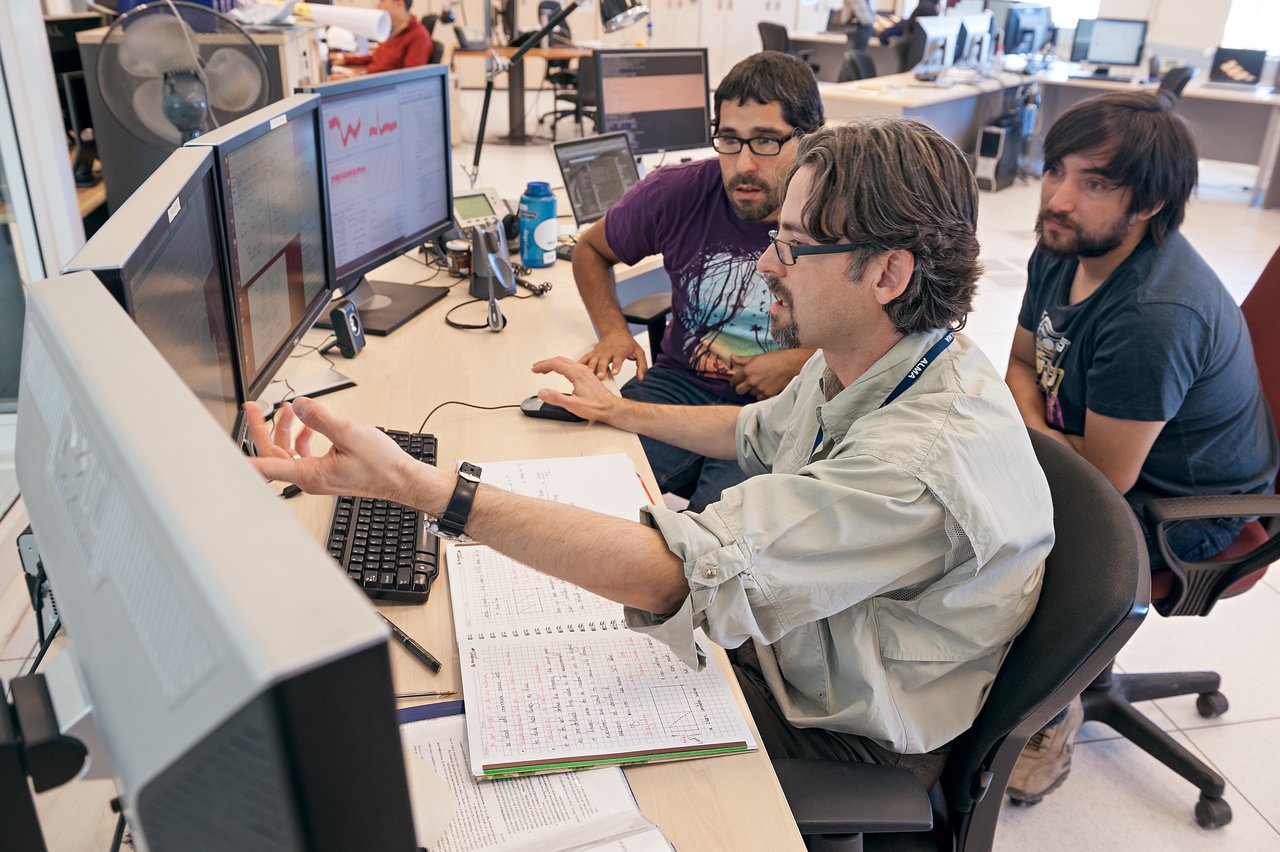- Why working at high altitudes can be dangerous to humans
- The results of groundbreaking studies investigating the impacts of hypoxia
- How ESO, NAOJ and NRAO manage these risks to keep workers at ALMA safe
Q: Tell us about your staff — what kinds of people work at ALMA and the OSF?
A: We have on average 250 people at our observatory. From those, approximately 50 are exposed to intermittent hypoxia, which is a medical condition where the body does not get sufficient oxygen. We need all types of workers and their skills: from cleaning staff, to electrical and mechanical technicians, to a range of civil engineers, to our scientists. The astronomers who end up using ALMA data seldom need to work at the high site.
Q: What are the conditions like for your staff?
A: Our facilities in the Atacama Desert are essentially like small towns located in remote places, where the access to entertainment, leisure, medical care, and contact with loved ones is limited. This takes its toll on the sociological, psychological and personal development of our teams. But the environment is one of our biggest challenges. The ALMA site of is one of the driest on Earth, with very extreme weather and fast changes between conditions — we can have all four seasons in one day!
Perhaps most importantly, we are confronted with rapid altitude changes that physiologically affect our workers’ bodies. Low oxygen levels make our work unsafe and more difficult. Since we must travel from 2900 to 5100 metres above sea level in just 45 minutes, we are exposed to hypoxia.
Q: What is hypoxia and what effects does it have?
A: Hypoxia is a deficiency in the amount of oxygen that reaches the body’s tissues. The severity of its effects depends on the length of exposure and the person’s physiology. We’ve been working with the University of Zurich in Switzerland, the University of Calgary in Canada, and the Universidad Católica del Norte in Chile to study the effects of hypoxia, as well as possible solutions for how to reduce these effects in our workers. It’s a great win-win for all of us. The medical researchers enjoy working with us — ALMA is like a natural laboratory for these studies due to its high altitude — and we, in turn, learn new information that we can use to take precautionary measures for our staff.
In the latest round of studies in 2016, researchers examined our workers who volunteered over six weeks, examining their cognitive skills, sleep quality, breathing patterns, blood flow to the brain, and changes in blood flow between the heart and lungs. The studies are currently being reviewed and will be published this year. Among the many things we learned, we found out that hypoxia influences a worker’s quality of sleep, attention span, and short-term memory. This poses a real danger, as it negatively impacts the quality, productivity and safety of our workers and equipment, since many of our staff work on tasks that require a high level of concentration. This means that accident probability goes up since people are less alert.
Q: Facing these risks, how do you ensure that staff working at ALMA and the OSF are safe?
A: The results of these ongoing studies have made us change our daily programme, activities, and procedures to create a safer working environment. We’re currently making changes to our approach to safety and health, which has been used as a model across our facilities and Chile. We also carry out our High Altitude Medical Evaluation every year, which means that each worker gets a green light from a doctor more often than required by the Chilean authorities.
Among the many things we have changed, we have made the use of portable medical oxygen mandatory for all drivers from the 3000 metres above sea level and up, and for all workers on the Chajnantor Plateau where the antennas are located. The O2 tanks have evolved from big, bulky, heavy cylinders to smaller lightweight tanks made of carbon fibre. At the beginning, they are uncomfortable for the worker to use, but they get used to it — we’ve even designed backpacks to carry the O2 tank everywhere. Since we use liquified O2 that is very dry, we monitor our workers and provide nasal sprays to moisturise their airways.
The AOS (Array Operations Site) technical building on the Chajnantor plateau is also now permanently oxygenated (we have a liquid oxygen plant installed). It is also recommended that drivers going up and down our road have a copilot; that staff should work in teams of at least two; that supervisors should plan their work activities to follow exact procedures, with workers following bullet lists of small tasks; and that workers should limit the number of working hours at high altitude, optimising their shifts.
We limit the time that all our workers, including contractors, spend at 5100 metres. Each of our staff work on a roster — eight days working at the site, and six days off work back at sea level. The day that they arrive, they are not allowed to go up to the high site. The second day of their shift, they are allowed to go up for just four hours; the third day for six hours; and from the fourth to the eighth day, a maximum of eight hours. No one is allowed to sleep at the high site.
We have also increased our medical staff to have one registered nurse, stationed at the OSF, plus two paramedics on shift at all times. The paramedics go out on-site to perform field checks and constantly monitor the workers. A medical doctor visits twice a week to attend to all the needs of our workers. We also continuously train our staff in the latest developments on how to handle hypoxia and develop new strategies such a special diet and exercise program.
Q: Why does a special diet need to be developed?
A: High altitude can make it more difficult for the body to digest food. Ideally, our workers should have small snacks at different times of the day, such as dried fruits, almonds, nuts, fresh juice, power bars — mostly fast-release energy foods. We need to avoid heavy meals because they will take longer to digest at such heights. For example, right now we have removed soda beverages, broccoli, onions, cauliflower, turkey, beans and legumes from the meals. Managing our workers’ diets is actually one of the biggest challenges we have since the local workers are used to having big meals — something that has been rooted in their culture for generations.
Q: Have any workers experienced severe altitude sickness, or has there been an altitude-related accident?
A: Our programme has been very effective, so we have not had a serious or fatal incident related to hypoxia. But this does not mean that we have not had emergencies! We’ve had three serious emergencies where workers needed to be carried down to the nearby city of Calama. Around 15 visitors have also experienced minor hypoxia-related symptoms that needed attention.
Luckily, our polyclinic staff have over 10 years of experience working at high altitudes and are regularly trained to deal with emergency situations. Our polyclinic is also equipped with three ambulances, two portable hyperbaric chambers, a cardiac arrest device, an emergency crash cart, and we have a contract with Telemedicina for the remote monitoring of heart illnesses. So we are very prepared to deal with emergencies.
Q: What are the long-term effects of working at high altitude?
A: The scientific literature has found that there are some long-term effects to hypoxia, mostly related to untreated issues or precautions have not been taken; but the studies performed so far have mostly been related to athletes or people who have suffered hypoxia-related accidents. There is very little available information on workers like ours in the long term. That is the reason why we are taking extreme care, continually monitoring our workers and partnering with universities to perform further studies.
Q: Tell us about your role as Safety Manager.
A: My office handles Safety, Health, Environment and Security at the ALMA Observatory, which includes managing the well-being of our people, the assessment of equipment, risk prevention, and our fire brigade team. We are also in charge of taking care of our environment by imposing regulations and resolutions based on environmental impact studies. We manage and develop ALMA’s health program and are also in charge of the management of the security contract.
Q: Can the extreme conditions affect the actual machinery of ALMA?
A: Yes, and our engineers are constantly reviewing and adapting changes to cope with this. Antenna parts are being constantly modified and designed so we can meet with the requirement of our scientific clients, and many parts that were supposed to last a certain amount of years are actually lasting half of that time. The amount of time predicted for workers to carry out tasks has also been affected.
Bear in mind that we are currently one of the few organisations in the world that has a wide array of equipment operating at these altitudes in such extreme conditions. Most information about how to function at these heights has not yet been shared by companies, mostly in the mining industry, who face similar challenges. So we are learning as we go. Our team has people with experience gained at the observatories in Hawaii and at APEX so we try to use their knowledge as a basis for many processes.
Q: Has ESO shared its findings with the wider community?
A: Yes, we have. There is not yet an international regulation for working at high altitude, so the data collected at ALMA is groundbreaking in the field and serves as a reference for ongoing medical studies. We are proud to say that the Chilean government has used our results to develop and change the current Chilean regulations on hypoxia, and we have participated in labour and health conferences to explain our approach to hypoxia. We are also an active part of the Lake Louise Hypoxia conference that is held every two years, where worldwide researchers show and explain their findings. One Peruvian company is using our health programme as a model for their own.
Other observatories also face the same problems as they build their telescopes at high altitudes to escape the effects of atmospheric distortion. We have formed a group of safety managers from different observatories who meet periodically to share experiences and findings.
Numbers in this article
| 6 | The number of weeks that workers were monitored during a 2016 hypoxia study |
| 45 | The time in minutes it takes for workers to travel from 2900 to 5100 metres above sea level |
|
2900 |
The altitude of the Operations Support Facility in metres |
|
5100 |
The altitude of ALMA in metres |
Links
Biography Iván López
Iván López is ALMA’s Risk Prevention, Health, Environment and Safety Manager. He holds a Bachelor of Science from the University of Calgary and a Masters in Environment and Safety from the Universidad Politécnica de Cataluña. Before joining ALMA, Ivan worked at Aker Kvaerner in different mining projects around the world, as well as for Transcanda International, Nova Gas International, and the City of Calgary — always involved in the Safety, Environment and quality fields.

